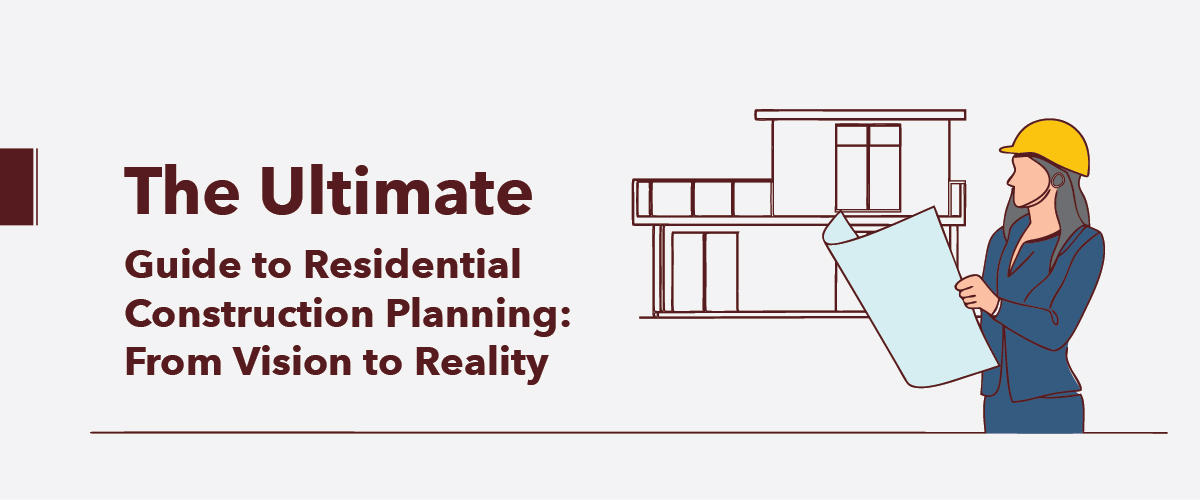
Building a custom home is one of the most satisfying things you can do in life. But without proper planning, it can be overwhelming for some. Building a home is more than laying bricks together - it is a transformation of your vision into a space that can be enjoyable, livable,and aesthetically beautiful. Whether you decide to hire an architect, designer, or develop your own construction, each step from establishing the goal of building the home, managing the design, and overseeing the construction is no different than any other substantial project requiring planning, teamwork, and attention to detail.
Defining Your Vision and Budget
The first step in planning your home construction is to define what you really want in your home.Think about the style, design, number of rooms, and the components of your home that will work best in matching your vision and supporting your lifestyle. Once you have established the vision, you will need to develop a realistic budget.Your budget will need to consider the cost of land, the necessary permits, materials, labor, and the cost of any and all unexpected services. Regarding the budget, it is generally wise to sock away at least 10-15 percent of the budget as a contingency. A conversation with a financial advisor or construction consultant earlier in the process can help navigate the balance of the dream and budget early in the project, and will help your home construction start right, not with a huge amount of stress and uncertainty.
Choosing the Right Location and DesignTeam
The place where you are building is crucial in determining the value of your home, as well as its impact on your overall quality of life. Consider the amenities in the neighborhood - quality of schools, commute times, zoning requirements, etc. Once you have selected the site, the next step is to engage a designer, typically an architect, interior designer, or builder. Hire designers who understand your vision, your budget, and your lifestyle. An effective design team will provide creative alternatives to maximize livable space and environmental sustainability while accommodating your style preferences.
Obtaining Permits and Approvals
These documents will verify that the project is compliant with building codes, safety regulations, and environmental requirements. The time it takes to receive approvals will vary significantly based on your location and the type of project. Typically, documentation and communication with the local agencies may be simplified by utilizing anarchitect or contractor. Skipping or delaying permits will likely lead to fees or unknown delays. Properly organized completion of required paperwork from the start will protect your investment and avoid legal liabilities, leading to delayed construction.
Planning the Construction Timeline and Phases
Most residential construction will progress through several vital stages, which include site preparation, foundation work, framing, roofing, electrical and plumbing work, interior finishes, and a final inspection. Scheduling each phase properly will help prevent overlapping or delays. Since weather conditions, material availability, and contractor schedules can all affect timelines, flexibility is required. Regular progress meetings with your builder will help keep you informed of updates or changes to the schedule. Having a thorough, accurate timeline will help manage expectations, keep costs down, and maintain momentum; this will ensure the job is completed in a timely fashion and your dream home stays on schedule.
Managing Construction Quality and Final Inspections
As the construction progresses, your priority becomes maintaining quality control. Regular visits to the site allow you to monitor worker workmanship, verify materials meet standards, and review the execution of plans for compliance with the design. Open communication with the builder will assist if you see something that concerns you. It is easier to fix something early in the process rather than once the project is finished. After the renovation, a thorough final inspection will be required to verify safety, structural integrity, safety systems, and compliance with building codes. Before taking possession, ensure any minor defects are addressed and any touch-ups are completed.
The Last Words
Every step, beginning with your home vision to managing inspections, will require you to consider each scenario with a thoughtful decision, cooperation, and patience. Using your trusted professionals, managing your expectations, and focusing on quality will lead you to a pleasant construction experience. Remember, all great homes begin with a plan, which is a mix of creative ideas and reality. Whether it is your first home or a new home, this ultimate construction guide will support you in making your vision a reality, brick by brick.